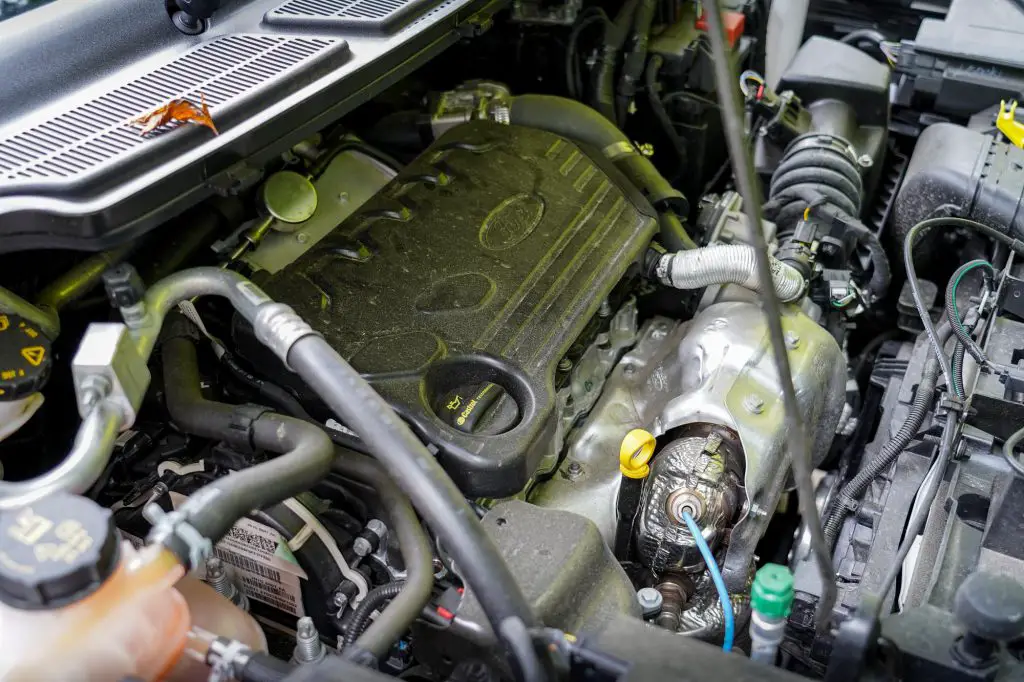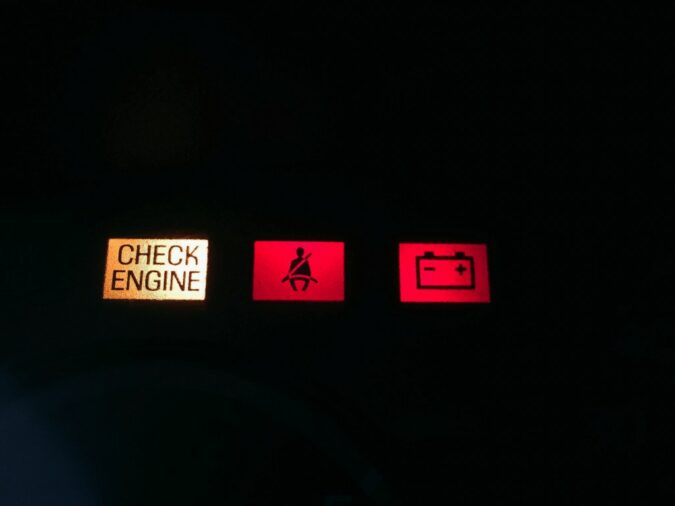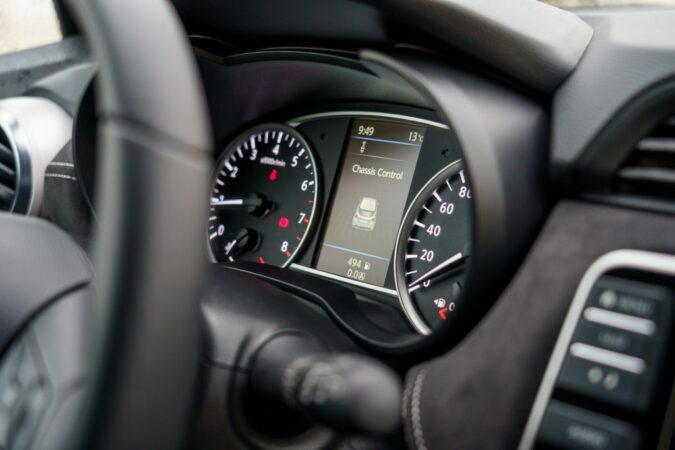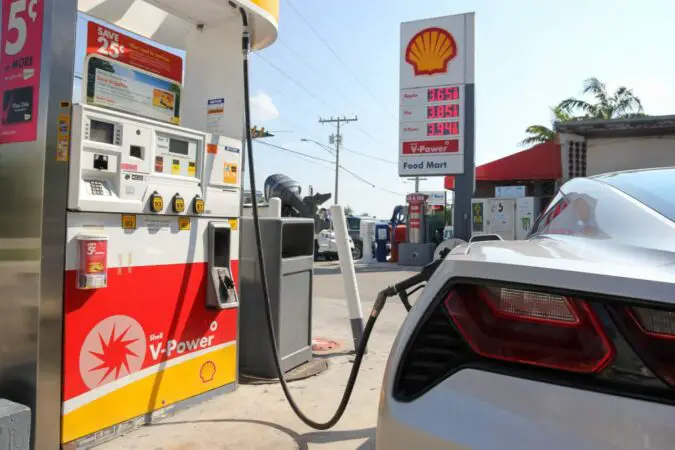Are you getting a check engine light and you diagnosed a code that indicates a problem with the O2 sensor? If that is the case, then you are at the right place because there will be a lot to cover when it comes to the bad O2 sensor symptoms.
Having a problem with your car that is connected with the O2 sensor can be really tricky to deal with. This is the case because this sensor is really important and it gives the PCM the ability to adjust the air to fuel mixture.
And also it is really tricky to get to. They can be tucked away and hidden underneath the car. So, if you have a downstream O2 sensor that is bad, then you highly likely will need a lift to replace it. The upstream O2 sensor is a lot easier to replace. But more in-depth on the two we are going to elaborate on later on in this article.
First, we will learn what is an O2 sensor and the location of this O2 sensor, and the two types of sensors. After that, we will cover the bad O2 sensor symptoms and we will elaborate more on how you can diagnose a problem with this sensor and how to replace it. So, if you want to learn more about how to deal with a bad O2 sensor, please follow along.
What Is O2 Sensor?
Now first let’s introduce ourselves to the topic and learn more about the basics of the O2 sensor. I bet that there are people who are reading this topic who are just starting on working with cars and want to learn the basic function of this device. Knowing the basis will give you a better perspective when it comes to understanding the bad O2 sensor symptoms. So, let’s begin.
As its name implies, this sensor has a goal to measure the flow of oxygen in the exhaust. Gathering this data is really important for your engine to run properly and maintain a good idle.
Without this sensor, your engine will not be able to adjust the air to fuel mixture right. This will result in poor engine work and terrible performance. And frankly, you don’t want that happening to you.
If you didn’t know, the ideal air to fuel mixture is 14.7:1. But what do these numbers mean? Well, these numbers mean that you should always have 14.7 parts of air and 1 part of fuel. Whenever these circumstances are not met, you will have to struggle with the bad O2 sensor symptoms.
These include a lean or rich air to fuel mixture. A lean condition is when the engine has too much air in the system. And the rich situation is when there is too much fuel inside of the intake. When the O2 sensor fails, the rich situation is more present. But more on that later on. Now before we cover the bad O2 sensor symptoms let’s learn the O2 sensor location.
O2 Sensor Location
As we cleared the basics of the O2 sensor and learned what is the role of this component. We think that now it is time to learn more about the O2 sensor location. This is needed before we learn the bad O2 sensor symptoms.
So, where is this component located on a car? The O2 sensor is mounted on the exhaust. This is the case with all cars. There is no other place where this component will be mounted.
What is worth noting is that there are two of these sensors. One sensor is located before the catalytic converter and the second is mounted after the catalytic converter.
The first one is the one that is more important and when it breaks it can cause a ton of damage to the catalytic converter. So, whenever you have a bad O2 sensor, don’t delay the repair and try to fix it as soon as possible. But how you can recognize these sensors?
Well, you will notice them screwed on the exhaust manifold or the exhaust pipe. The probe is the one that bolts in while the cold part and the wiring are on the other side. This wiring goes to your harness and from there is connected with the PCM.
So, to sum things up real quick, whenever you have a code with a message like “bank 1 sensor 1”. It means that it is the first O2 sensor on bank 1 of your engine. Sensor 2 is the one that gets after the catalytic converter. And here we came to the important bit that we will cover in the following chapters before we learn the bad O2 sensor symptoms.
Types Of O2 Sensor
Now let’s cover the two types of O2 sensors that are out there. You need to know these types before you dive into the bad O2 sensor symptoms.
This is crucial when it comes to diagnosing a bad O2 sensor and finding the sensor that is indeed faulty. Luckily it is not something new, we are already familiar with these sensors but we need to clear something out. But more on that in the next two chapters.
Upstream O2 Sensor
When diagnosing a code with the O2 sensor based on the bad O2 sensor symptoms, you will highly likely come across the name upstream O2 sensor.
This confuses a ton of people and you should not be confused. This type of sensor is the upper sensor that is mounted usually on the exhaust manifold or before the catalytic converter.
So, if you have the message upstream O2 sensor, this means that you have a problem with the first sensor. So, bank 1 sensor 1 and bank 2 sensor 1. These two are the upstream O2 sensors. Now let’s cover the next type of O2 sensor before we learn the bad O2 sensor symptoms.
Downstream O2 Sensor
The next type of O2 sensor that we would like to cover before we cover the bad O2 sensor symptoms is the downstream O2 sensor.
But how this downstream O2 sensor is different from the upstream sensor? Well, it is different because this O2 sensor comes after the catalytic converter.
Coming after the catalytic converter means that it gives a ton of useful data to the PCM on how the converter functions. So, whenever you get a P0420 or P0430 that is connected to the catalytic converter, you probably got this message because this downstream O2 sensor saw something abnormal inside of the catalytic converter.
This is why you need to distinguish the two types. They might be physically similar in size and shape. But they are performing differently. But this doesn’t mean that you should ignore the bad O2 sensor symptoms. And more on these symptoms, we are going to elaborate in the following chapters in detail. So, follow along.
Bad O2 Sensor Symptoms
Now let’s get to business and start learning more about the bad O2 sensor symptoms. If you didn’t know, there are a ton of these symptoms concerning this O2 sensor and you need to learn them all if you want to be able to diagnose this problem.
So, read very carefully because we will get into the small details and explain everything when it comes to these bad O2 sensor symptoms and how to diagnose a bad sensor. So, follow along.
1. Check Engine Light
The first and most important in our list of bad O2 sensor symptoms is the check engine light. The check engine light will almost always turn on whenever you have a problem with one of your O2 sensors.
These sensors are really important for the proper engine work and the PCM needs them to be in the best shape in order for the engine to run properly. So, the PCM is performing tests on them constantly and whenever it notices that something is wrong with a specific O2 sensor it will decide to show the check engine light.
There is a vast number of trouble code codes that are associated with the O2 sensor. But the most frequent are the upstream O2 sensor issues. As we noted, this is the type of sensor that is mounted high in the engine. More precisely on the exhaust manifold or after the exhaust manifold but before the catalytic converter.
Since they are exposed to a lot of heat, they tend to fail prematurely. You might face codes that are concerned with the electrical circuit of the sensor or the circuit of the heater element. Whenever there are reports like these, it means that something is wrong and needs to be checked. Here are some reference codes, P0134, and P0162.
But there could also be codes that are connected to the air to fuel mixture as well. For example P0171 (similar to the P0171 code Toyota), P0175, or other codes. Some of them indicate that the air to fuel is lean, while the others indicate a rich state.
Whenever there is a code with the air mixture, it is crucial for you to check the MAF sensor and the O2 sensor. Now let’s continue with the other bad O2 sensor symptoms.
2. Bad Air To Fuel Mixture
The second most common symptom in our list of bad O2 sensor symptoms is the bad air to fuel mixture. But why is this the case?
As we noted previously, the O2 sensor is in charge of adjusting the air to fuel mixture. So, whenever this sensor fails, your car in most situations will run rich.
Running rich means that the car will waste too much fuel. There will be fewer parts of air and more parts of fuel. So, consequently, you might have a code such as the P0175 for example.
When the car is running rich it is a clear sample that you have an issue with the O2 sensor on your car or possible problems with the injectors. Now let’s move to the next bad O2 sensor symptoms.
3. Rough Idle
The next in our list of bad O2 sensor symptoms is the situation when you are having a rough engine idle.
This will always be the case whenever you have a broken O2 sensor. The engine will not be happy at all at idle speed. You will experience this problem all the time until you decide to replace this sensor.
After replacing it with a good sensor, the engine will resume working smoothly and will deliver a good performance. Until then, you will be stuck with these bad O2 sensor symptoms.
4. Engine Hesitation & Stalling
The next in our list of bad O2 sensor symptoms that we would like to cover is the problem with the engine performance.
Whenever this problem occurs in your vehicle, you will have problems with running the engine. The engine will run really poorly and will hesitate. There will be no power in the engine and you will feel like you have lost 30 horsepower or even more in some extreme cases.
In the worst case, your engine could potentially stall all of a sudden. You will notice this along with the rough idle. If you don’t give some gas to the car, the engine RPM will drop significantly and the engine will shut off.
Then you will have to restart the engine again and again. This is a complete nightmare and a situation that you don’t really want. So, beware of these bad O2 sensor symptoms.
5. Bad Fuel Economy
Another on our list of bad O2 sensor symptoms is the situation with the poor fuel economy. Whenever you have a poorly working O2 sensor or an O2 sensor that has failed, you will notice a significant drop in fuel economy.
This will be a bigger drop than usual because your air to fuel mixture will be messed up. The fuel gauge will continue to drop while performance will not be greatly reduced.
The engine will work poorly in this situation. This is why you need to take things further and diagnose the problem with your car. But more on that after we finish all the bad O2 sensor symptoms and learn what you can expect when you have a bad O2 sensor.
6. Black Smoke From Exhaust
Another in our list of bad O2 sensor symptoms is the symptom when you notice black smoke coming from the exhaust when you press hard on the throttle.
Another symptom associated with this black smoke is the rotten egg smell. These symptoms are also closely related to a bad catalytic converter (which could be diagnosed further if you learn how to tell if catalytic converter is bad).
And what is most intriguing, a ton of catalytic converters fail because of a bad O2 sensor on a car. And these converters cost a whole fortune to replace.
So, whenever you notice a check engine light, you need to learn why this check engine light appears and then sort out the problem accordingly because you just don’t want to replace the catalytic converter and the O2 sensor on your car. This could cost you about $2,000 to $2,500 in the worst case. Now let’s cover the last in our list of bad O2 sensor symptoms.
7. High Emissions
The last in our list of bad O2 sensor symptoms is the symptom when you have high emissions. Let’s say that you took the car for registration and you fail the test, why is this the case?
Well, this is the case because the emissions that your car will produce without the O2 sensor being in proper working order will be much higher than the emissions when the car is working with proper catalytic equipment and a good O2 sensor.
In these situations when you fail the emissions, there could be two things. Either the catalytic converter is bad or you are having bad O2 sensor symptoms. But how you can diagnose this problem with the bad O2 sensor? That’s what we are going to cover in the following chapter.
How To Diagnose & Replace O2 Sensor
Now as we covered the bad O2 sensor symptoms, we can move on and cover the diagnostics process. This is the most important part of this article for you. You just need to know how this is done right.
The first thing that you will need to diagnose a bad O2 sensor is an OBD2 scanner. With this scanner, you will be able to get the right input and which sensor is affected. There will be a ton of codes probably and you should look for the ones that are associated with these sensors or with the air to fuel ratio.
Once you find out which sensor produces codes, for example, bank 1 sensor 1. You can move on and start diagnosing the sensor. For this, you will need to remove the sensor from the car, and also you will need a multimeter tool. With this multimeter tool, you can measure resistance, voltage, continuity, and a ton of other different things.
But for our application, we are only interested in the resistance and the voltage. We will share two methods for testing this sensor. By measuring the resistance and also by measuring the voltage.
The first method includes measuring the resistance. A good sensor should produce between 2 to 4 ohms. For this, you will need to tweak the multimeter to ohms and see what you get. More on the process in the video above.
The second method of testing will require measuring the voltage. If you didn’t know when the sensor heats up it produces voltage. So, for this, you need to tweak the multimeter to volts and heat up the sensor to see the readings. If there is a good voltage, then the sensor is good. More on this in the video above.
O2 Sensor Replacement Cost
We have covered the bad O2 sensor symptoms and how to diagnose a bad sensor, now let’s see the O2 sensor replacement cost, how much is it?
On average, the O2 sensor will cost you between $150 to $300. The installation will also cost you about $100. So, on average, you can expect to pay about $250 for replacing this component.
Temporary Fix For Bad O2 Sensor
A temporary fix for the O2 sensor with bad O2 sensor symptoms will be to clean it really well and make sure that the probe inside of the sensor is in good condition.
Sometimes the probe can get clogged up and cause the sensor to malfunction. If this doesn’t work, then you will have to replace it, there is nothing that you can do to temporarily fix the sensor.
Conclusion
In this article, we have covered quite a bit when it comes to the bad O2 sensor symptoms. First, we learned the basics of the O2 sensor and learned how it works. Then we covered the mounting locations and how you can find them on the car.
Then we covered the bad O2 sensor symptoms and learned what are the most common ones. After that, we learned how you can diagnose it and fix it and at what cost.
F.A.Q
Now let’s answer some frequently asked questions.
What Does An O2 Sensor Do
The oxygen sensor is monitoring the oxygen flow inside of the exhaust system. This sensor helps the PCM to adjust the air to fuel ratio and make your engine work smoothly and efficiently in the process.
What Does A Bad O2 Sensor Look Like
A bad O2 sensor does not look too different from a good sensor. The only difference between the two will be the bad O2 sensor symptoms that the bad one is going to produce. These include rough idle, poor engine work, poor fuel economy, and rich air to fuel mixture.
What Causes An Oxygen Sensor To Fail
In most cases, the enormous heat that this sensor is exposed to during its lifetime. Especially the upstream sensor. The more miles are accumulated the bigger the chance to fail. Even though this isn’t always the case.
What Are The Symptoms Of A Bad O2 Sensor
The bad O2 sensor symptoms include a rough engine idle, poor fuel economy, engine hesitation, black smoke from the exhaust, and overall poor engine work. The engine will not be happy at all in this situation.
What Are The Symptoms Of A Bad Upstream O2 Sensor
These symptoms will include poor engine work that will translate into engine misfires, rough idle, hesitation, lack of power, lack of response, sluggishness, and black smoke from the tailpipe. Overall, poor engine work.
What Sensors Can Cause A Car Not To Start
The only two sensors that can prevent your car from starting are the camshaft position sensor and the crankshaft position sensor. When these sensors fail, the car will continuously crank but not be able to start until you replace them.




